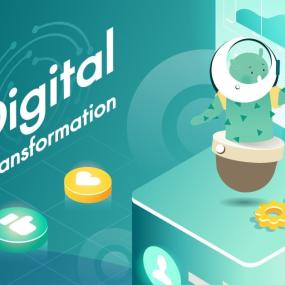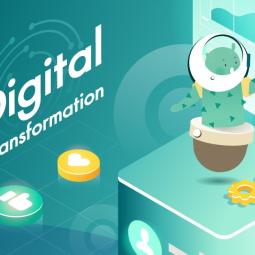Digital transformation rethinks how an organisation uses people, processes, and platforms/technologies in order to:
- Optimise customer and/or client experience
- Enhance products and services
- Improve work environments
- Deliver value to stakeholders, and
- Enhance business models.
Digital transformation is not just about a platform/technology, even if these are commonly the first things that come to mind when not-for-profit organisations think about digital transformation and becoming a ‘digital’ or digital-first organisation. Rather, digital transformation consists of three main elements, collectively known as the 3Ps:
- People first
- Process second
- Platform/technology third.

Definition of People/Process/Platform
People
People are the first of the three key elements of digital transformation. To have a successful digital transformation journey, organisations need to look at the existing personnel (internal stakeholders), their roles and skill sets. Internal stakeholders (e.g. senior level executives, managers, team members, etc.) need clarity regarding their roles and responsibilities in any transformation projects. This in turn supports decision-making, technology selection, process deployment/optimisation, and recruitment. So many organisations fall into the trap of concentrating too heavily on technology and processes while overlooking the people involved.
Moreover, organisations need to assess the digital maturity level of their people. Do they currently possess the appropriate experience and knowledge to execute digital transformation? Do they require more training, can they be trained, or should new staff be brought in to achieve the set goals? Do current employees require upskilling, teaching employees to perform current jobs in new ways using technology, or they need reskilling, which involves teaching employees new skills to transition into different jobs and career paths?
The other side of any digital transformation’s ‘people’ category is the external component – customers, clients and/or supporters (e.g. members, donors, volunteers, etc). As organisations adopt digital transformation, the same process that was applied internally must also be applied externally. This process is about identifying external stakeholders, understanding their needs, how they use the products and services, and how they will be impacted by digital transformation changes such as integrating new technology or developing a new website.
Process
A process is a sequence of steps/actions that combine to achieve a specific goal. Process in digital transformation mostly defines the ‘how’ aspect. For example, how do we utilize people and technology to solve the business problem? How do we achieve the desired result?
One of the main objectives of any digital transformation is identifying, analysing and improving existing business processes. Process improvement aims to eliminate weak points or bottlenecks in business operations in order to:
- Improve productivity, efficiency, utilisation, and quality
- Reduce operational budget by effectively using assets and resources
- Eliminate waste and duplication of tasks
- Reduce friction in business processes
- Improve the customer or client experience
- Reduce process completion time.
Platform/technology
The platform/technology element provides the digital technology tools that people can use to implement the process. Most of the time, not-for-profit organisations invest heavily in technology to achieve strategic advantages. The people and process are a secondary priority. After acquiring new technology, they will typically try to fit the people and processes into this new technology framework. However, this doesn’t result in the best outcomes. No digital transformation journey can be successful without combining the right people with the right process and the right technology.
Read next
How can NFPs benefit from digital transformation?
10 steps to create a digital transformation strategy roadmap





Status message
Thanks for rating this guide.